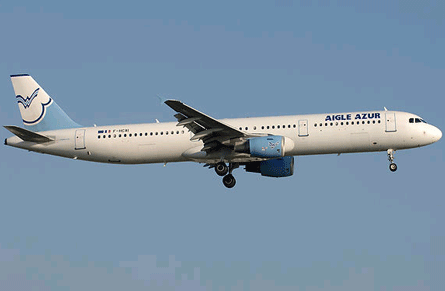Investigation into a hard landing at Algiers by an Aigle Azur Airbus A321 have discovered that the pilot failed to retard the throttles, having earlier complained that he was uncomfortable flying the jet from the right-hand seat.
France's Bureau d'Enquetes et d'Analyses says the pilot - who had 1,200hr on type and 6,200hr in total - had never flown the A321 in the right-hand seat as a co-pilot, and expressed unease "several times" during the approach to runway 23.
The auto-thrust was operating in the 'managed' regime. At 1,300ft the pilot disconnected the autopilot but kept auto-thrust engaged.
Just after the jet started to flare, three automatic 'retard' call-outs sounded at a height of 20ft. But the aircraft's throttle levers were still in the 'climb' position when it touched down, at a descent rate of 600ft/min, and bounced.
 |
|---|
© AirTeamImages/Peter Unmuth |
Its spoilers did not deploy and the thrust increased to 50% of N1. The A321 flew for about 3s, and rose to a height of 7ft, before the pilot reduced the throttles to 'idle' and the spoilers activated.
Engine thrust reached 57% of N1 before dropping. As the aircraft descended, the pilot increased its pitch but the aircraft contacted the runway with a descent rate of 850ft/min and a 3.3g impact. About 1.5s after this second touchdown, the aircraft's pitch passed through the limit of 9.8° and the rear fuselage hit the runway. Nose-gear touchdown came 11s after the second main-gear contact.
"Undoubtedly pre-occupied by his lack of ease with right-hand flying, the pilot forgot to set the thrust levers to 'idle'," says the BEA, in an inquiry report into the 8 January 2008 event. "The non-flying pilot did not notice this anomaly."
It states that the failure by the non-flying pilot to mention deployment of the spoilers "did not alert" the flying pilot to the high descent rate that preceded the second touchdown.
The BEA highlights the lack of recent experience of the pilot in right-hand seat flying, but points out that the non-flying pilot felt his colleague had "no particular difficulties" in handling the aircraft.
As a result of the tail-strike, the aircraft suffered wear across 2m (6.5ft) of its fuselage underside, including damage to some of its frames.
Source: Air Transport Intelligence news























